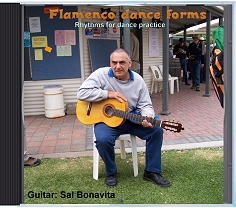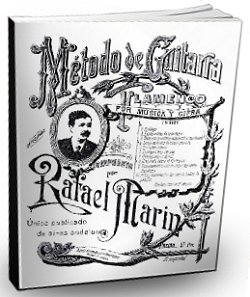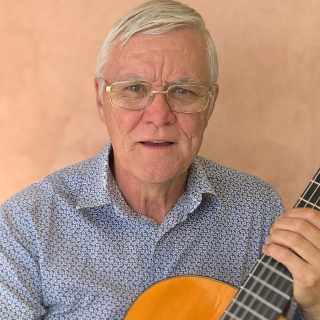This information is copied from a Word document found on John Moore's flamenco page.
Used here with permission.
| Guitar | Dance | Cante | |
| a. Intro | falseta, compás | marking | salida |
| b. break | llamada | perhaps footwork, llamada | |
| c. letra | compás | marking | letra |
| d. falseta | falseta | marking/footwork | |
| e. footwork | compás | footwork | |
| f. break | llamada | llamada |
(c-f) may be repeated for a second letra.
| g. escobilla | falseta/compás | footwork | |
| h. break | llamada | llamada | |
| i. final | compás | marking, footwork, pellizcos | letra |
The final is generally a correspondingly lighter form than the form of the main dance, e.g., the final of soleá is bulerías; the final of tientos is tangos, etc.
Alegrías:
Alegrías has a more structured variation on the general scheme:
a. Intro
b. break
c. letra
d. footwork
e. break
f. silencio (paseo lento)
g. castellana
h. escobilla
i. break
j. bulerías de Cádiz
Things to be aware of:
- Speed ups (and occasionally slowdowns)
- Compás changes (e.g., 16ths to triplets; double to simple time)
- Llamadas and desplantes (and the difference between them)
- Llamadas that stop versus those that don't
- When to play falsetas and when to play compás





